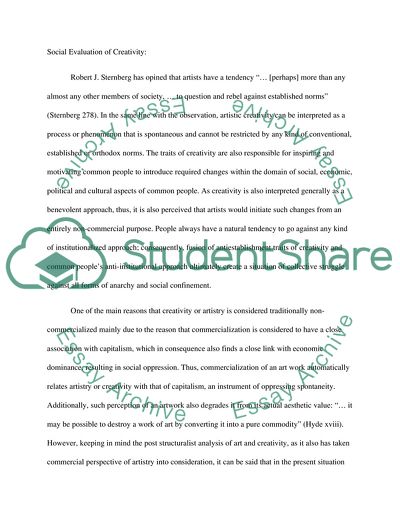Cite this document
(Social Role of an Artist Report Example | Topics and Well Written Essays - 1500 words, n.d.)
Social Role of an Artist Report Example | Topics and Well Written Essays - 1500 words. https://studentshare.org/visual-arts-film-studies/1738314-charlie-chaplin-modern-times-the-gift-lewis-hyde-life-in-the-iron-mils-davis
Social Role of an Artist Report Example | Topics and Well Written Essays - 1500 words. https://studentshare.org/visual-arts-film-studies/1738314-charlie-chaplin-modern-times-the-gift-lewis-hyde-life-in-the-iron-mils-davis
(Social Role of an Artist Report Example | Topics and Well Written Essays - 1500 Words)
Social Role of an Artist Report Example | Topics and Well Written Essays - 1500 Words. https://studentshare.org/visual-arts-film-studies/1738314-charlie-chaplin-modern-times-the-gift-lewis-hyde-life-in-the-iron-mils-davis.
Social Role of an Artist Report Example | Topics and Well Written Essays - 1500 Words. https://studentshare.org/visual-arts-film-studies/1738314-charlie-chaplin-modern-times-the-gift-lewis-hyde-life-in-the-iron-mils-davis.
“Social Role of an Artist Report Example | Topics and Well Written Essays - 1500 Words”. https://studentshare.org/visual-arts-film-studies/1738314-charlie-chaplin-modern-times-the-gift-lewis-hyde-life-in-the-iron-mils-davis.


